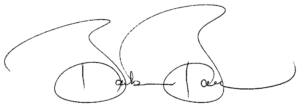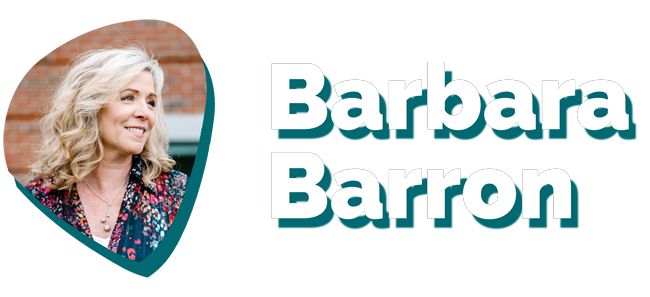by Barbara Barron | Posted on November 8th, 2017
Let’s talk about healthy relationships.
What are some of the qualities of a really healthy relationship? Think about the ones who enjoy with great friends, family members (well, some family members!), and maybe your colleagues or neighbors. What distinguishes them? It’s likely they feel safe and mutual. There is a commonality, respect, and fun. Probably loyalty, support, and, for some, love. Doesn’t happen overnight, generally, Instead, it takes time and commitment, right?
But when it does, it’s the best, right?

How about your donors? There are some in our field that fall into the trap of thinking that our donors are really our friends. Now, in selected cases, that is true. But in the main, it’s really not. And believing that can cause is to lose sight of what connects us : the mission of our schools or organizations. So, if they aren’t our friends, what is the true nature of our relationships with our donors? And do the same rules of engagement apply?
I’d say yes. Fostering any healthy relationship requires work and persistence. We must stay connected with our colleagues, supervisors, and donors on a regular basis to keep the flame of professional friendship and mutual respect alive.
I’m of the mind that “connection” boils down to two types of gestures:
- Irregular, small gestures
- The Grand Gesture
Irregular, small gestures are the constant tending to the garden. The e-mail. The picture. The phone call. The tiny gift.
The Grand Gesture is what we do when we want to make a big wave. The “donor recognition event” is a good example. Or when we all gather around to reveal the name of a new building, often with a name that a donor has chosen to honor his or her family.
The annual fund letter can be a fantastic grand gesture — if done properly. I’ve written at length about how to make those things really work in another post.
It’s my personal belief that we tend to lean on Grand Gestures too much.
We all know why. We spend the year not tending the garden – it happens – and find ourselves feeling guilty and like we need to do something.
So I thought, wouldn’t it be nice to think ahead on this? If I know it’s my duty to tend to all these gardens – in fact, it’s a pleasure – then I should prepare myself for the fine art of coming up with gifts for donors.
That’s why I came up with this list. First, I set some boundaries for myself: three criteria that, if followed, would never lead me astray.

Criteria #1: The gift should be personal
This is far easier if your donor has a child currently enrolled at your school.
One time, I emailed a donor a photo on a random Wednesday morning. The photo was taken in her daughter’s classroom and captured her child looking totally engaged. What was really special about that photo was that it was taken during math, a subject the girl used to claim to hate.
I was fortunate to capture that moment, but it happened because we made the time to visit the classroom and snap some candid shots. I knew there was a chance I would capture something of use – proof of a child being utterly alive and confident.
These are the moments that donors live for, and we should consider it our jobs to capture them. As is so often the case in our profession, the right thing to do is also the savviest. This donor is assured that her support is affecting life at our school in a positive way – and you better believe she’s making the connection that more children’s lives can be similarly changed with her continued assistance.
Criteria #2: The gift should be inexpensive
There’s something that happens in a donor’s head when they’re gifted something that feels expensive. And it’s not good.
Consider the logic for a moment: perhaps the donor is making a stretch gift to our school and is under the safe assumption that the money is going to fill a need, to “the right place.” The donor puts a great deal of faith in us, right?
What does it look like when that money comes back to them in the form of a gift?
Exactly. It looks like money being wasted. Or at least, misdirected.
But just because it’s inexpensive doesn’t mean that it has to seem cheap. I’ll give you a good example of this:
One time my team and I went searching the student archives and came upon an interesting letter, written by the deceased father of our Board Chair. We spent no more than $50 to matt and frame it and then presented it to the Board Chair at his 50th reunion. The contents of the letter? His dad imploring the then-Headmaster to admit his rascally boy.
Smash success! Priceless moment. It was both personal, and inexpensive. And, it also met our third and last criteria…

Criteria #3: The gift should be a surprise
And now we’ve come full circle!
This is by far the most important criteria of the three, and the one I want you to walk away with. Surprise your donors. Surprise them constantly.
These surprises can be so small that they might even seem irrelevant, like:
An email to the supporter of a scholarship student, from that student, sharing news of his team’s recent success on the soccer field and inviting her to attend the upcoming championship game.
This isn’t irrelevant. This is a gift! An opportunity that wasn’t there before. It took fourteen minutes.
Here’s another:
A short video capturing a fun experiment in chemistry class sent to the family whose gift to the recent capital campaign supported the new lab’s construction.
…which took maybe an hour all-in to arrange, shoot, and upload. But notice the teacher was “on the team” to allow this visit to the class. (Note to self…)
And another, just to drive it home:
A message left on the voice mail of a longtime supporter on the anniversary of his father’s passing. Just to say, “we’re thinking of you on this tough day, remembering your dad with great affection and appreciation.”
Fast, free, unexpected – meaningful.
You can think of many more. Remember:
- They don’t take a lot of time or money.
- They do need to be personal.
- They do require that we build our days and weeks so that finding those moments and making them happen is a priority.
Re-read that last one, because it’s really important.
If we aren’t scheduling the time to do this, we’re only shooting ourselves in the foot. We should be thinking about this stuff daily.
Radical thought: what if we built our development budgets, our office structure, and our goals around one central premise?
“Stewardship is the only thing.“
WHOO-WEE! I can hear it now! “Barbara, this is obviously how we want it to be, but how are we supposed to add this on to our already overflowing plates?!”
We aren’t.
It comes down to priorities. What are we going to stop doing so we have the time and creative space to do this? Hmm?
It’s a big question. And one worth thinking carefully about. If you can’t do everything you need to do, every day, then it’s time to challenge some assumptions.
I look forward to continuing this conversation on social media, as so many of you have been doing. I would love to hear about all your amazing gifts!
My name is Barbara Barron, and I’m writing this blog to share advice on a profession that I adore.
I’ve been working in the field of Independent School Advancement for nearly 20 years. In that time, I’ve had the pleasure of creating and implementing successful Strategic Fundraising Plans for so many incredible schools. I’ve had the privilege of seeing real growth at The Carey School, Marin Primary & Middle School, Woodside Priory, Crystal Springs, Presidio Knolls and others. (Maybe we’ve met!)
Nothing makes me happier than seeing a struggling school start to thrive. My hope is that you’re here to make a positive change as well. I hope my advice can be a part of that change.
Shoot me an e-mail if you want to swap tips, or share your voice here.
Let’s do this, together.



